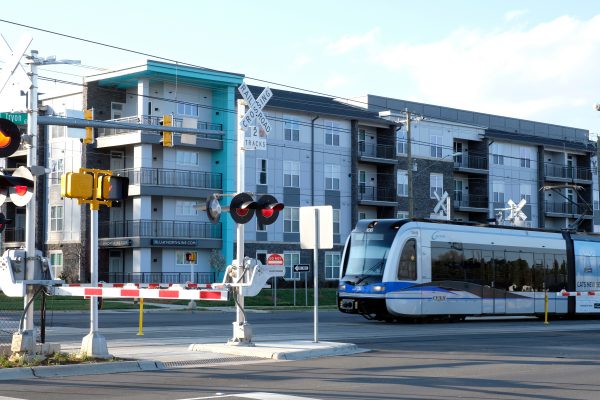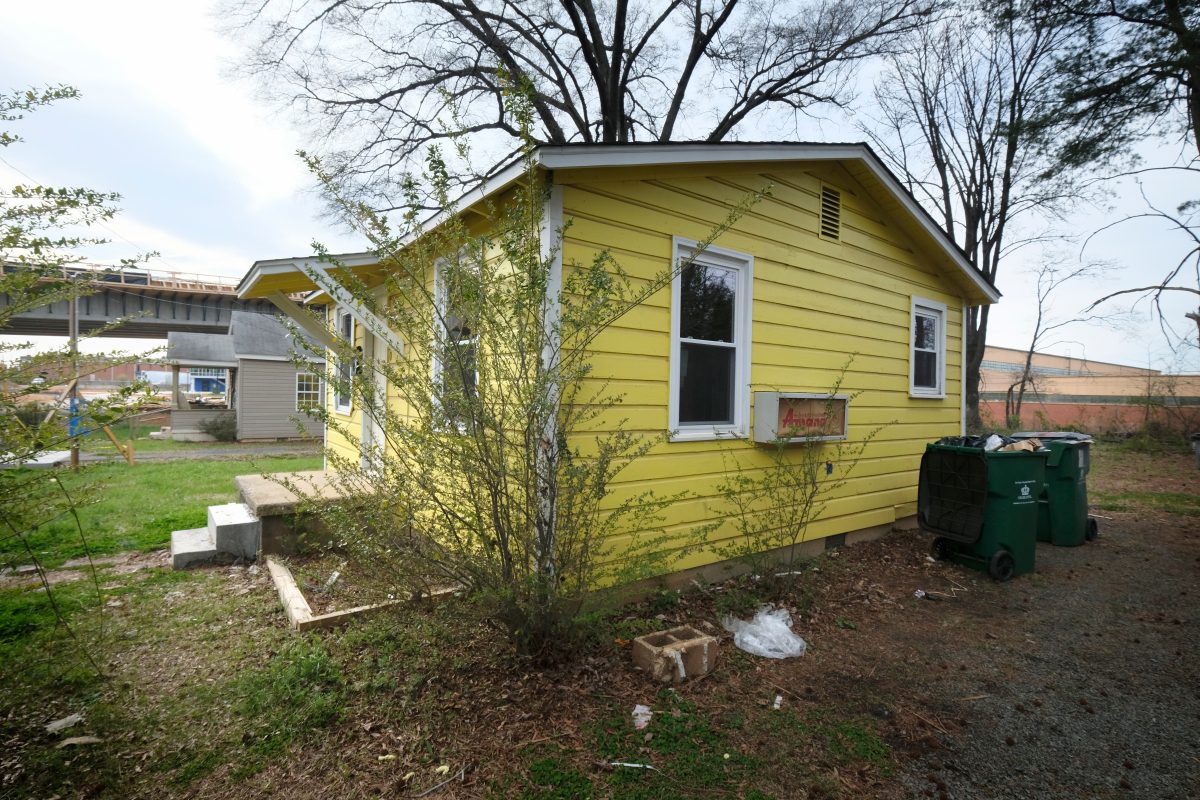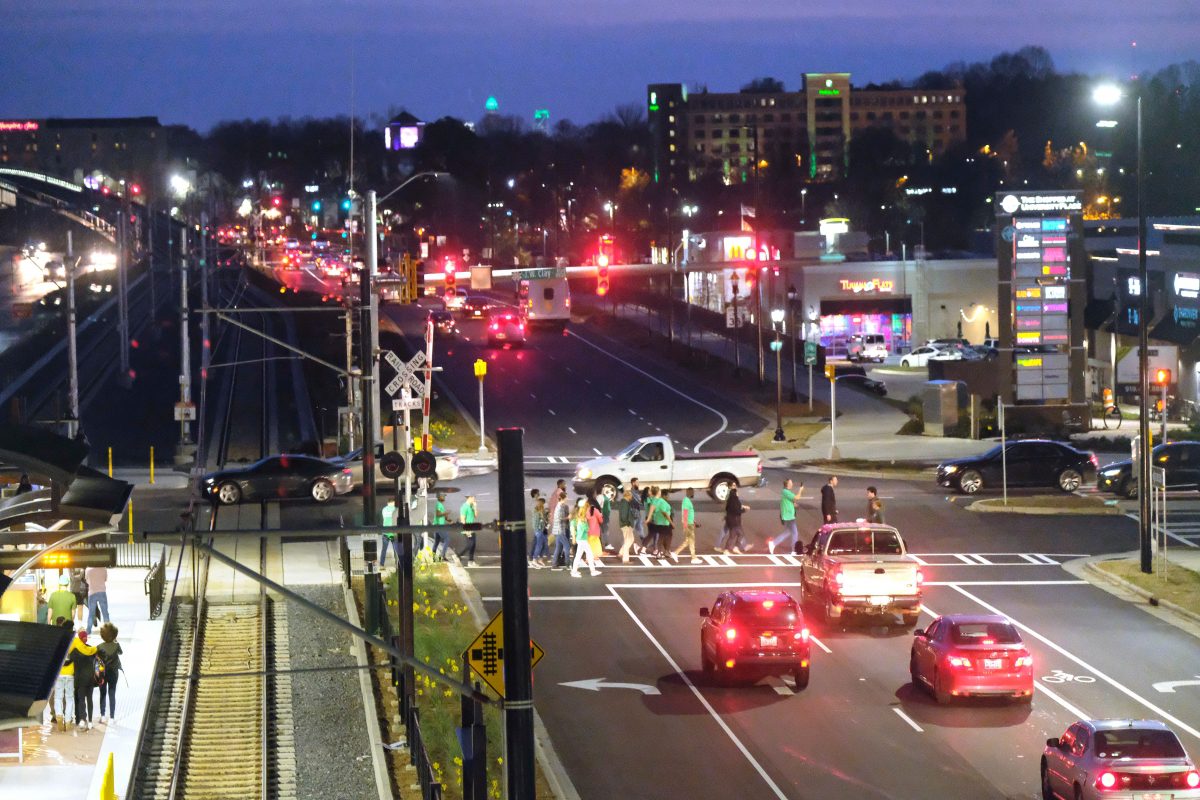People assume transit causes displacement. Does it really?

It’s a familiar story: A new transit line opens, spurring gentrification in nearby neighborhoods and pushing out long-time residents.
But is that always what happens?
New research from Dr. Elizabeth Delmelle, Dr. Isabelle Nilsson, Dr. Claire Schuch, and Tonderai Mushipe – all from UNC Charlotte’s Department of Geography and Earth Sciences – shows that the narrative around transit and displacement might be oversimplified. The effects of transit on neighborhoods are complex and context-specific, dependent on multiple factors.

Sugar Creek Station: It’s a five minute walk from the station to this house on one-block-long residential Bearwood Avenue, which dead-ends into a neighborhood park. Photo: Nancy Pierce
“We wanted to examine this link in light of the discourse we continued to hear that new rail investments cause gentrification and the displacement of lower-income residents, yet we could find little evidence that documented the extent to which this occurs,” wrote Delmelle.
Their two-year study is using both a quantitative analysis based on a national dataset tracing residential moves from 1970-2013 and an in-depth, qualitative study of the effect of the Blue Line extension in Charlotte. Their study of transit-adjacent neighborhoods in the US over that 43-year window didn’t find a broad-based displacement effect in the data.
“We found no evidence that lower-income residents have moved out of new transit neighborhoods at a disproportionate rate,” wrote Delmelle.
Lower-income people tend to move more often anyway – for example, because they’re more likely to rent – but after controlling for such factors, a new transit station didn’t appear to have a statistically significant effect.
“We don’t find support for the idea that it will automatically happen, as the popular discourse suggests,” wrote Delmelle.
So does that mean displacement doesn’t happen at all? Well, it’s more complicated than that.
“It is important to keep in mind that this is a national sample and our results represent an average,” wrote Delmelle. “It therefore doesn’t mean that transit-induced displacement never occurs, it simply means that across the country, on average, it has not been the norm.”
There are several complicating factors. For one, much of the new apartment construction along the Blue Line extension – some 5,000 units and counting – has taken place on empty or industrial land. That’s leading to densification but, as of yet, not direct displacement. Direct displacement from rising rents or properties being torn down for redevelopment might also be very spatially limited – for example, common within a block or two of a new station, but harder to pick up on at the census tract level.

JW Clay Blvd Station: The day after the Light Rail Extension opened, a steady stream of St Patrick’s Day revelers rode one stop from the UNC Charlotte campus to the Shoppes at University Place. Photo: Nancy Pierce
And it’s difficult to disentangle the citywide effects of other shifts in the real estate market, such as rising home prices driven by low supply, from the effect of a new transit station. Close-in neighborhoods like NoDa and Villa Heights were already seeing redevelopment pressure changes before the light rail extension began.
“It has likely helped to accentuate change, but the conditions were already in place for the changes to play out,” Schuch said. “Areas that were already being redeveloped, such as NoDa, received an extra boost of residential and commercial development, but the property value increases and influx of young professionals was already occurring.”
Their analysis showed one difference between lower-income residents and higher-income residents when a transit station comes: Higher-income residents were more likely to move to a higher-income neighborhood if they relocate.
“One hypothesis is that middle and higher income homeowners have been better able to capitalize on price increases in areas near new transit stations,” Delmelle wrote. “The important takeaway from this part of the analysis is that this benefit is not shared equally across all income groups.”
There are measurable effects on smaller scales, however. And people also perceive light rail’s arrival as a harbinger of redevelopment, Schuch has found through surveys and focus groups with Charlotteans around the Blue Line extension.
“There are a significant number of long-term residents who would like to be able to stay in their homes close to the light rail but are constantly being approached by investors to sell their home. There is a demand for programs and policies that allow people who live to current and future light rail stops are able to stay there,” Schuch wrote.
The researchers are now conducting more interviews and focus groups, as well as a content analysis of local news articles to document public perceptions and how light rail is discussed. They’re also looking for changes in other indicators, like eviction rates along rail lines, how properties are marketed and business turnover. The study is expected to wrap up in the summer of 2020.